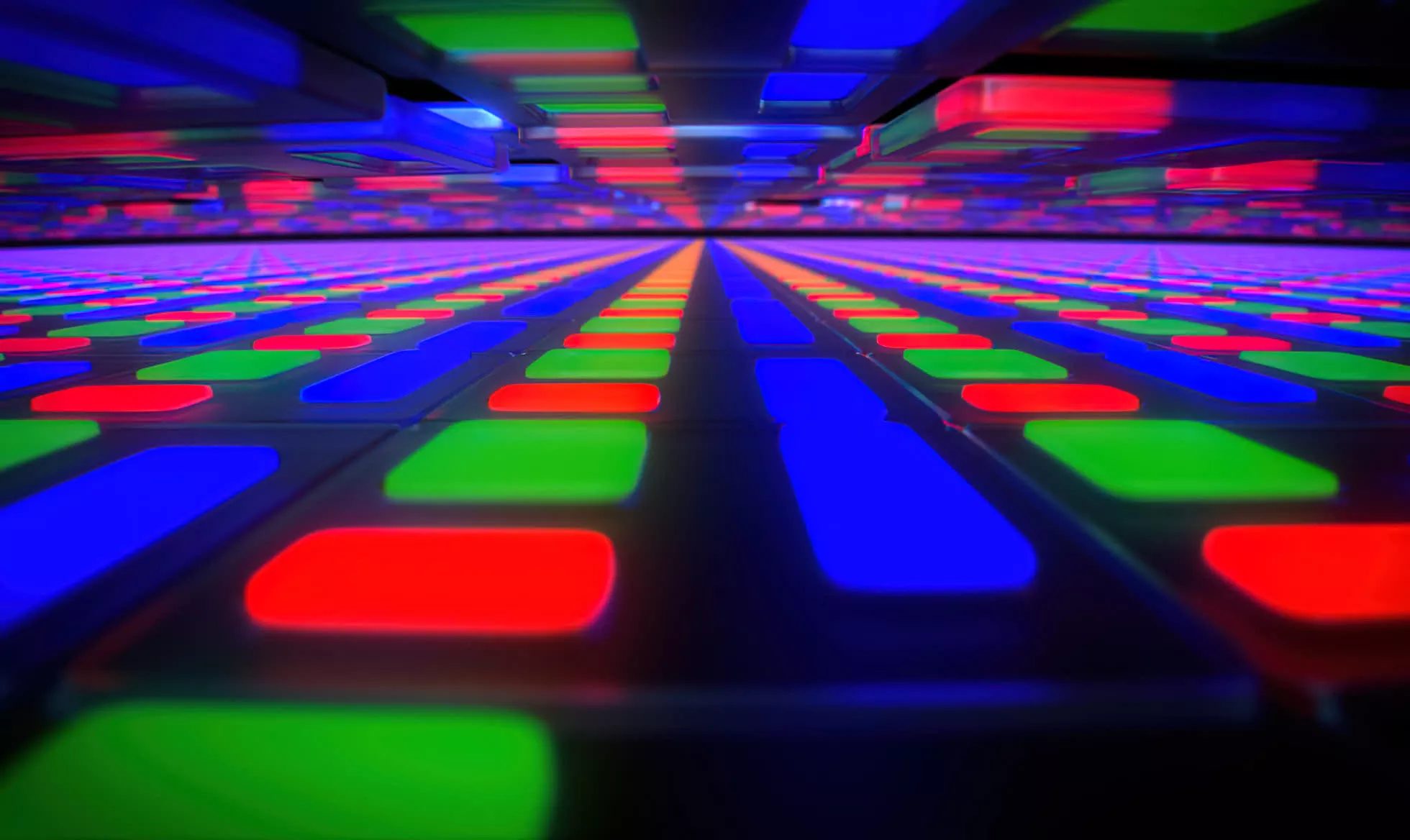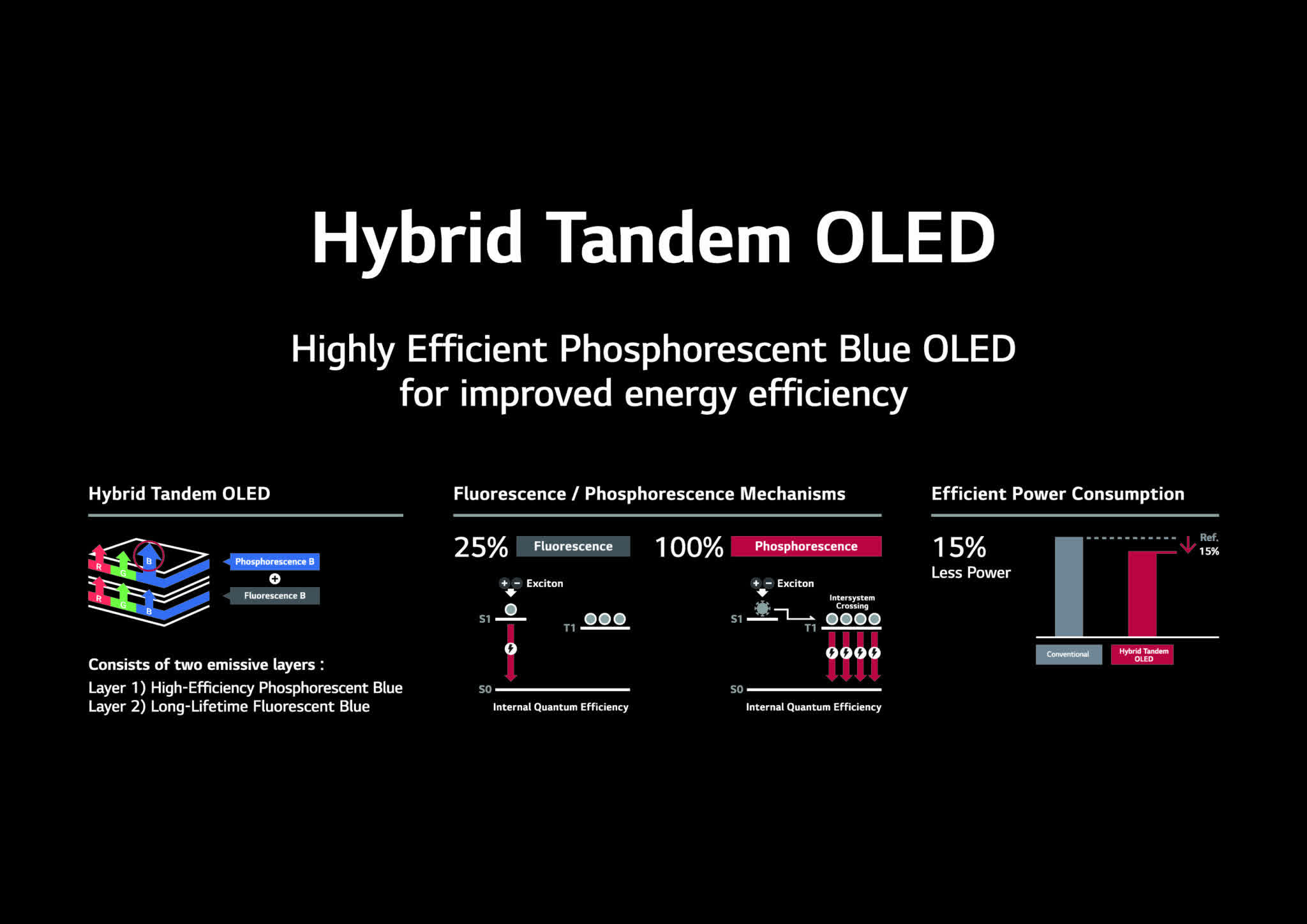Forward-looking: LG Display has become the first company to verify the commercialization of blue phosphorescent OLED panels. With the panels ready for mass production, LG says it has taken a significant step closer to realizing a "dream OLED" display: an OLED panel that achieves phosphorescence for the red, green, and blue subpixels.

In OLED panels, the blue pixel color is more inefficient and has a shorter lifespan than red and green. One of the main contributors to burn-in is the blue pixel and how it emits light compared to red or green pixels.
OLED pixels use organic compounds that glow via either phosphorescence or fluorescence. Phosphorescent emitters are usually more power-efficient and age more slowly, so many OLED panels employ them for the red and green sub-pixels. Blue sub-pixels, however, still rely on the less efficient fluorescent process. Because blue light needs extra power to match the brightness of red and green, those pixels wear out faster, making screens more prone to burn-in.
LG's solution has been to partner with Universal Display Corp (UDC) to create blue PHOLED panels. They use a two-stack Tandem structure: one emissive layer consists of high-efficiency phosphorescent blue and the other is long-lasting fluorescent blue. This is different from the conventional single-stack WRGB design that uses a blue fluorescent layer alongside red and green phosphorescent layers.
The result is a 15% saving in power consumption compared to a typical OLED TV while maintaining a similar level of stability. For consumers, this could result in OLED panels in devices offering not only a better picture but also more energy efficiency, meaning battery-powered devices could last longer between charges. LG Display supplies OLED panels to a number of tech giants, including Apple, LG Electronics, Samsung Electronics, and Sony.
LG writes that as more products require high definition and high efficiency, such as AI PCs and AR/VR devices, the application of blue phosphorescence technology is expected to expand rapidly.
LG Display will be showcasing the technology at SID Display Week 2025 in San Jose, California from May 11. It will unveil a blue phosphorescent OLED panel featuring two-stack Tandem technology applied to a small and medium-sized panel that can be used with IT devices, such as smartphones and tablets.
With the technology still at an early stage of development, it will likely be some time before it appears in larger-screen devices such as OLED TVs – expect the rollout to take a couple more generations at least. There's also the question of the additional manufacturing costs it could introduce.
